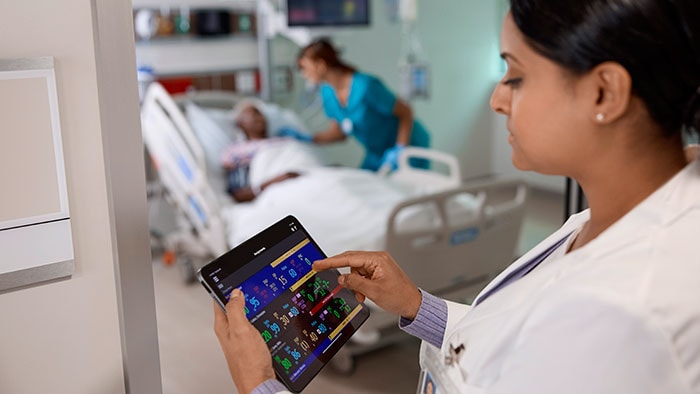New study results reveal how Philips’ informatics solution aids in fighting hospital acquired infections
When people enter a hospital, they don’t expect to catch a potentially fatal illness. Healthcare-associated infections (HAIs) occur in a healthcare setting, impacting two million patients in the U.S. annually, resulting in approximately 100,000 deaths [1]. The U.S. Centers for Disease Control and Prevention reports more patients die from HAIs in the US annually than all breast and prostate cancer cases combined. HAIs not only cause serious sickness and death but also increase the cost of care. While hospitals have infection prevention (IP) teams in place to limit the spread of bacteria from patient to patient, tracing the way infections move through people, places (locations), and things (such as devices) is a difficult, time-consuming, and imprecise process.
A recent scientific manuscript from Ward et al. (2019) published in the journal Infection Control and Hospital Epidemiology, features data from a team of scientists, clinicians, and engineers – spanning industry and academia – who sought to answer a key question: can a new, first-of-kind informatics tool that integrates patient data, lab data, and information from bacterial genomes, help empower IP teams to find and potentially stop the spread of HAIs?
The study focused on four specific bacteria – S. aureus, E. faecium, P. aeruginosa, and K. pneumonia – which cause difficult and persistent infections. The team retrospectively analyzed infections caused by these bacteria over the course of one year at a tertiary academic medical center.
To perform this unique analysis, the team built a new cloud-computing system, Philips IntelliSpace Epidemiology, designed to collect clinical data from a hospital’s data feeds to trace a patient’s journey and encounters within the hospital, which is then overlayed with genetic data from the bacteria of the infected patient. This unique solution enables IP teams to establish likely transmissions to identify potential modes of transmission, all while keeping health information protected and secure. Using the technology of IntelliSpace Epidemiology, the authors of the study uncovered 34 clusters of HAIs – of which only one had been previously suspected. The 33 unsuspected infection clusters not only represent transmissions not previously identified, but also missed opportunities to intervene and potentially stop HAIs from spreading. The authors concluded the new Philips IntelliSpace Epidemiology solution could enable clinicians to intervene and interrupt the chain of infection transmissions, potentially resulting in fewer infections. The algorithm’s inclusion of data from genomic sequencing of infecting bacteria, a unique feature of IntelliSpace Epidemiology, may help clinicians more accurately map and trace the movement of distinct bacterial strains that otherwise would appear to be similar.
In developing IntelliSpace Epidemiology, scientists at Philips studied slight changes in a bacteria’s genetic code. Bacteria of a single species from a single patient collected over a number of days differed only slightly in their genetic code due to normal bacterial mutation. But bacteria of the same species found on different patients showed much larger variations. Using this analysis, the researchers were able to define thresholds to determine related vs. unrelated bacterial strains. From these genetic data, integrated with other hospital-derived epidemiologic data, IntelliSpace Epidemiology aims to determine if a new bacteria isolated from a patient should be included or excluded in a grouping (or cluster) of related infections. This new method of combining diverse and rich clinical and genomic datasets in order to track and help control HAIs is termed Precision Infection Prevention in recognition of the hospital infection prevention team’s role in preventing HAIs. Key implications of the study and article conclude: To read the paper in its entirety, visit Hospital Control & Epidemiology. More information on Philips IntelliSpace Epidemiology is available here. [1] Klevens RM, Edwards JR, Richards CL, Jr, et al. Estimating health care-associated infections and deaths in U.S. hospitals, 2002. Public Health Rep. 2007;122(2):160–166.
Share on social media
Topics
Contact

Kathy O'Reilly
Philips Global Press Office Tel.: +1 978-221-8919
You are about to visit a Philips global content page
Continue












